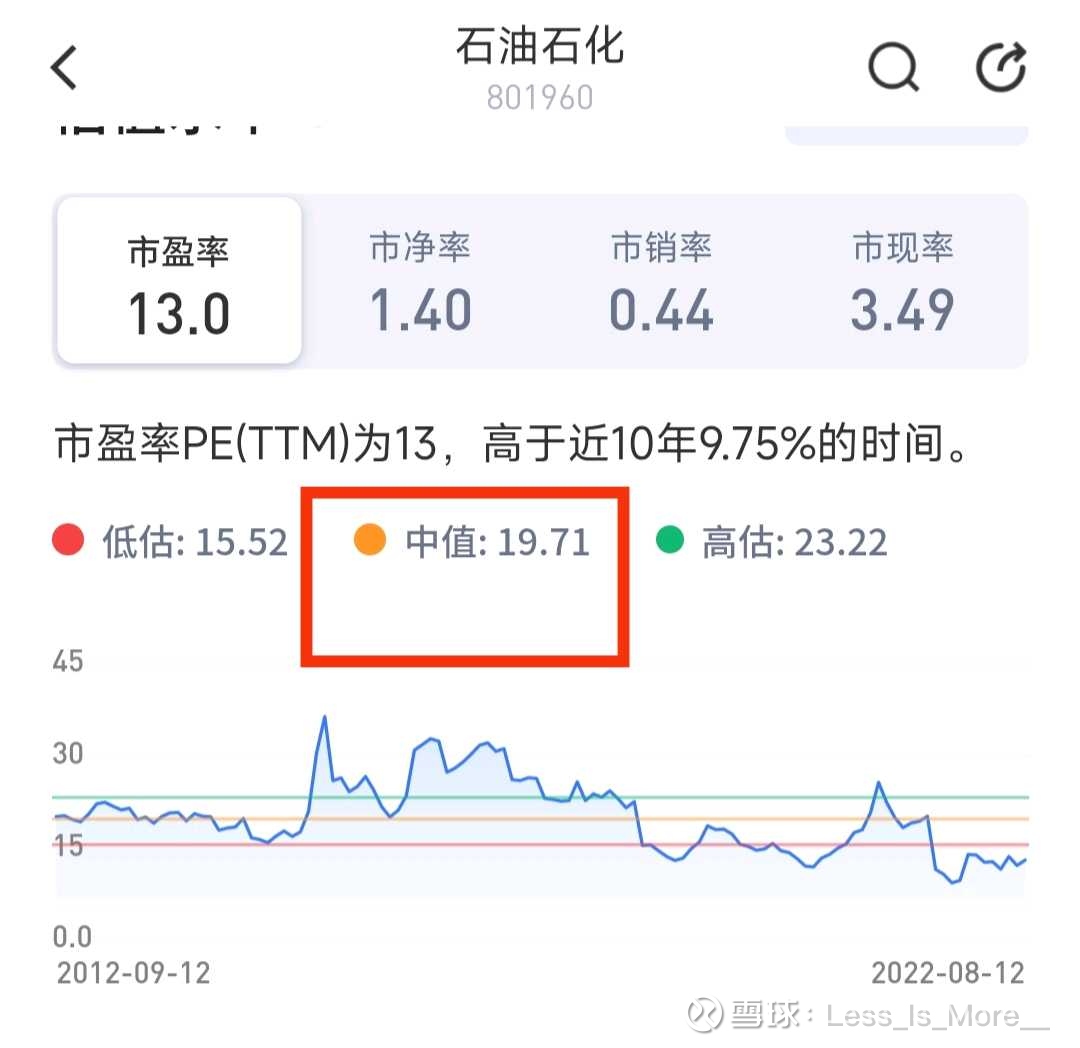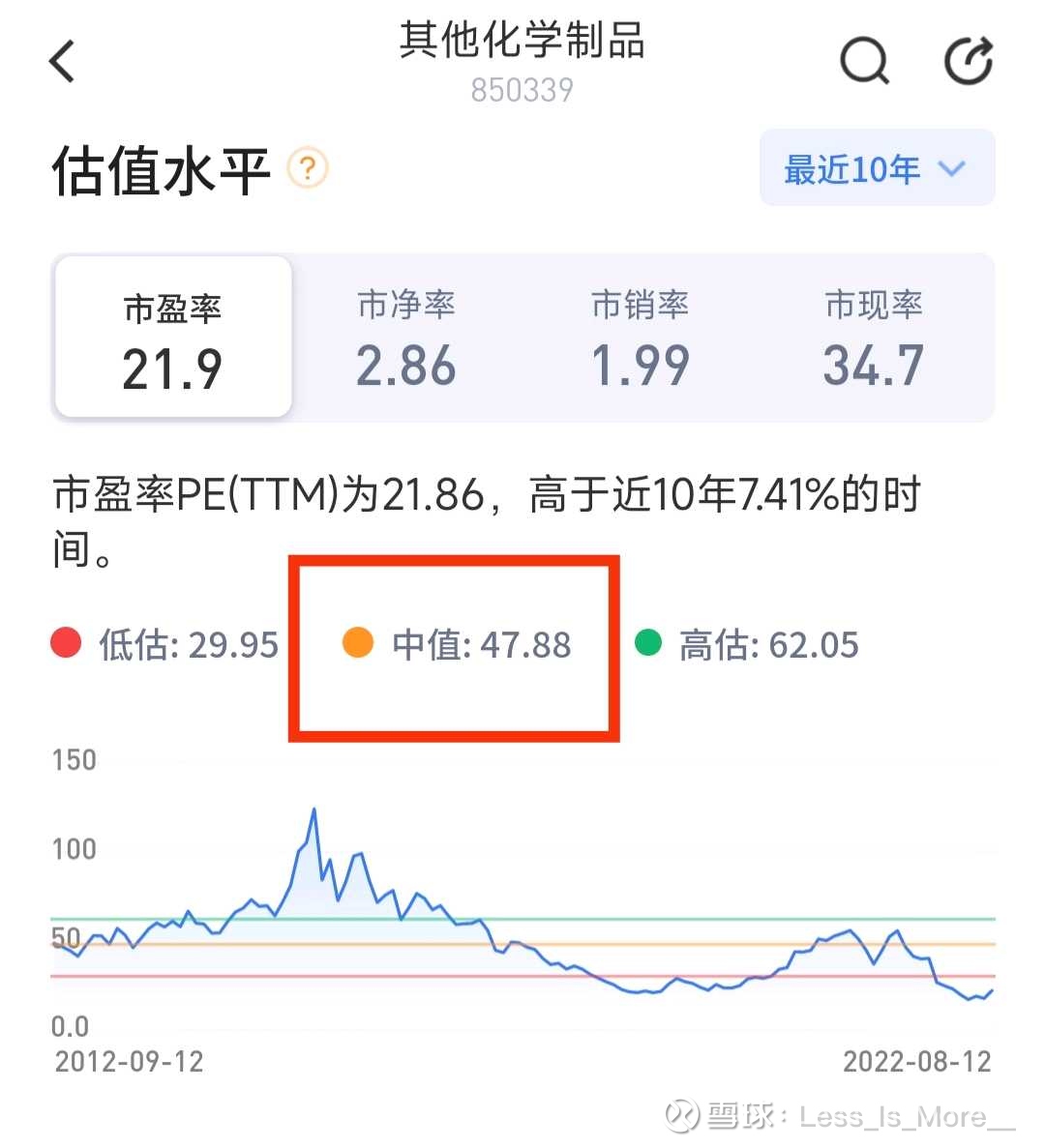If you see the fans, please give a like and let me know that you have seen it. Thank you~ It is not appropriate to write articles. If you can give a reward, I will be happier. ![]()
![]()
Full text: 859 words
Original author: Less_Is_More__
Many people have asked me about the valuation of Small and Beautiful (Yuanli Technology): chemical stocks are generally cyclical stocks with low valuations. Is the current valuation of Small and Beautiful still cheap enough?
I think it should be analyzed on a case-by-case basis, not just chemical engineering.
Look at a set of pictures:


Figure 1 is the petrochemical industry (large chemical industry), and Figure 2 is other chemical products industry (I roughly understand it as fine chemical industry)
It can be seen that: the median value of the ten-year cycle, the pe of fine chemical industry is 47.88, and the pe of large chemical industry is 19.71
Why is there such a big difference?
I thought that because an enterprise and industry itself has a life cycle. Roughly divided into: introduction period, growth period, maturity period, decline period (different people may call it differently)
It is better to divide the valuation of a company and industry into several stages for more accurate valuation.
At the beginning of the business: from 0 to 1, the valuation should be moderately high, because the performance grows rapidly, and the valuation will be amortized in a few years or even a year. The performance is the rapid rise of the stock price weekly and monthly.
The business has entered the growth stage: At this time, the business volume has begun to take shape, the growth rate may not be so explosive, and the valuation will decline moderately. It is shown as a weekly and monthly spiral of the stock price
After the business is mature: the growth of the business volume (shipments) of the entire industry and the company slows down, and the growth of performance (revenue) may be more affected by product price fluctuations, while the price of bulk products is generally linked to the macro economy. The performance is the weekly fluctuation of the stock price, the monthly fluctuation, or the slow new high.
The business has entered a recession period: the total demand of the industry has decreased year by year, and the valuation has collapsed, which is manifested as a long-term decline in the stock price.
Summarize:
1) When the industry and enterprise are in the early life cycle (introduction period, growth period), the impact of [explosion of demand] on the valuation is greater than that of [macroeconomic fluctuations], so it should be moderately overestimated.
2) When the industry and enterprise are in the mid-life cycle (mature stage), the impact of [burst of demand] on valuation is less than [macroeconomic fluctuations], and should be underestimated appropriately.
3) When the industry and enterprise are at the end of their life cycle (recession period), the valuation collapses and should not be estimated. ![[squinting] [斜眼]](http://assets.imedao.com/ugc/images/face/emoji_61_xieyan.png)
![[squinting] [斜眼]](http://assets.imedao.com/ugc/images/face/emoji_61_xieyan.png)
![[squinting] [斜眼]](http://assets.imedao.com/ugc/images/face/emoji_61_xieyan.png)
![[squinting] [斜眼]](http://assets.imedao.com/ugc/images/face/emoji_61_xieyan.png) ,Does not participate.
,Does not participate.
The level is limited, please correct me!
Review of previous articles on valuation:
What are the drivers of the P/E ratio?
@Today’s topic @snowball talent show @snowball creator center
@PhotovoltaicETF_ @新Material ETF @ChemicalETF_516020 @ChemicalETF_ #雪球星Plan# #PV# $Hikvision(SZ002415)$ $Wanhua Chemical(SH600309)$ $Yuanli Technology(SH603217)$
There are 9 discussions on this topic in Snowball, click to view.
Snowball is an investor’s social network, and smart investors are here.
Click to download Snowball mobile client http://xueqiu.com/xz ]]>
This article is reproduced from: http://xueqiu.com/4171832674/227977732
This site is for inclusion only, and the copyright belongs to the original author.